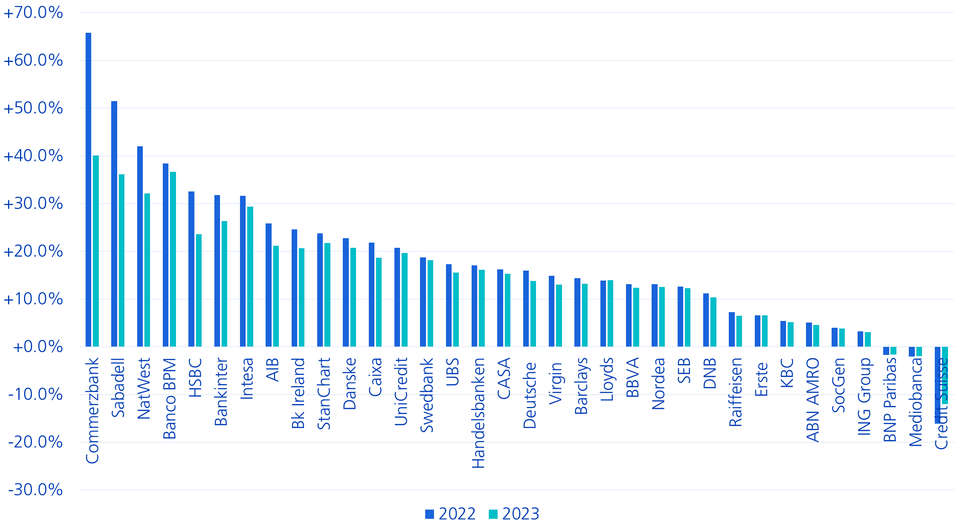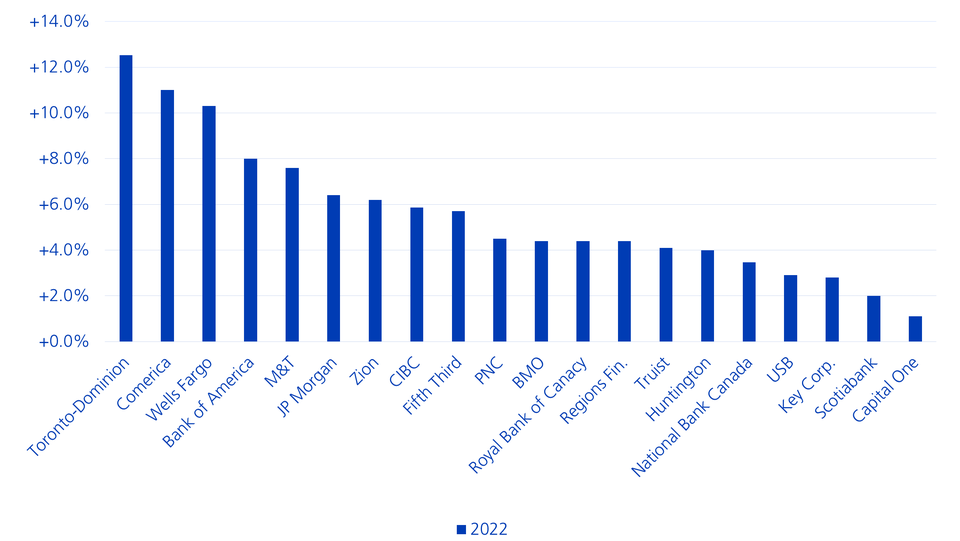Interest rate sensitivity IV/V: Effects of interest rate developments on bank equities
Although the war in Ukraine abruptly stopped the upward trend in bank equities, rising interest rates continue to have an effect on banks' earnings. Part IV of our five-part series on interest rate sensitivity in various asset classes.

At the beginning of the year, bank equities experienced a mighty upturn as interest rates rose. This bull market was also supported by robust economic prospects and rising inflation expectations.
The war in Ukraine has brought an abrupt end to this constructive environment for banks, at least in the short term. Uncertainties surrounding the macro outlook, which is extremely important for bank stocks, the associated credit risks and disruptions to the global financial system have increased tremendously. In a phase of easing, however, interest rate trends are likely to quickly regain their role as the driving factor behind bank equities.
Why bank equities respond to changes in interest rates
Interest rates represent the price for lending and receiving funds, which continues to provide the largest earnings contributions for the majority of listed bank stocks despite the expansion of the commission and financial services business. Accordingly, interest rate trends are also highly relevant for interest margins and bank earnings, as shown in the following two charts:
Banks in Europe: Effect of a parallel shift in the interest rate curve by +1 percentage point on pre-tax profits

Banks in the USA and Canada: Effect of a parallel shift in the interest rate curve by +1 percentage point on net interest income

Banks demonstrate different levels of sensitivity
The risk of rising or falling interest margins arises from uneven maturity structures between deposits and receivables. Influences from the shift in the interest rate curve could be largely neutralised by observing matching maturities. However, in practice interest rate changes have strongly divergent effects on interest margins or net interest income depending on the structure of the loan and securities portfolios (lending business) and the financing side (deposit business). Loan agreement terms (with variable interest rates or interest rates fixed for a certain period) and the less pronounced adjustment of rates for customer deposits (refinancing) to the benefit of the banks may also play a decisive role in the event of interest rate hikes. There are also different levels of interest rate effects over time depending on the maturity scale.
The development of the interest margin business therefore also depends on bank-specific variables and forecasts are accordingly complex. The available calculations are largely based on internal bank models with simplified assumptions, such as the scenario of a parallel shift in the interest rate curve. In the event of flattening or even inversion, the sensitivities change. In light of this, the information provided by the banks mentioned in the two charts only offers certain indications for investors.
The cycle of interest rate hikes is positive overall despite secondary effects
If the interest rate environment shifts, further aspects must also be taken into account. The majority of banks benefit from rising interest rates, as shown in the charts above. However, even more far-reaching effects can sometimes occur, as higher interest rates can also lead to increasing burdens on borrowers and thus more loan defaults. Nonetheless, the net effect is likely to be positive, particularly with regard to a possible normalisation from the current low-interest-rate level. Consequently, this should have a positive impact on bank stocks.
From an investment policy perspective, we currently prefer Canadian and US bank equities over European stocks due to the more favourable interest rate dynamics.


